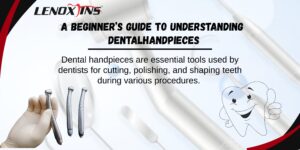Upper vs Lower Extraction Forceps: Understanding the Key Differences
- lenoxinstro
- October 21, 2024
- Dental Forceps, Dental Surgical

Table Of Contents:
- Key Takeaways
- Introduction to Dental Extraction Forceps
- Anatomical Considerations for Upper and Lower Extractions
- Design and Features of Upper Extraction Forceps
- Design and Features of Upper Extraction Forceps
- Design and Features of Lower Extraction Forceps
- Design and Features of Lower Extraction Forceps
- Comparing Functionality: Upper vs Lower Extraction Forceps
- Comparing Functionality: Upper vs Lower Extraction Forceps
- Selecting the Appropriate Forceps for Clinical Practice
- Conclusion
Choosing the right extraction forceps is crucial for dental professionals. Many clinicians may not realize that upper and lower extraction forceps are designed for specific anatomical differences, impacting their effectiveness during procedures. This article will explore the key distinctions in design, functionality, and appropriate usage of upper and lower extraction forceps. By understanding these differences, dental practitioners can enhance their techniques, minimize complications such as alveolar osteitis, and ensure better patient outcomes. Engaging with this content will not only clarify common misunderstandings but also empower clinicians to select the right tools for each extraction case.
Key Takeaways
- Proper selection of extraction forceps significantly influences dental extraction success and patient comfort
- Understanding anatomical differences between upper and lower jaws is crucial for effective extraction techniques
- Specialized forceps are essential to minimize trauma and enhance healing during dental extractions
- Continuing education helps dental professionals refine skills related to extraction tool usage and techniques
- Quality instruments improve efficiency and reduce complications in dental extraction procedures
Introduction to Dental Extraction Forceps

Dental extraction forceps play a vital role in oral surgery, providing the necessary tools to safely extract teeth from the maxilla and mandible. These specialized pliers vary significantly between upper and lower extractions, featuring distinct beak shapes designed for optimal tooth grip. Selecting the proper forceps is crucial for effective and efficient surgical procedures, influencing the extraction outcome and patient comfort.Dental extraction forceps
The Role of Forceps in Dental Extractions
Forceps play an essential role in dental extractions, particularly for the removal of both deciduous and permanent teeth. These tools are designed to grasp the tooth securely while minimizing trauma to the surrounding soft tissue, which is crucial for ensuring patient comfort and effective healing. Proper technique in using extraction forceps not only improves outcomes but also supports the successful placement of prosthesis in cases where tooth replacement is necessary, highlighting the importance of informed consent in the extraction process.
Overview of Extraction Forceps Types
Extraction forceps are categorized into two primary types: upper and lower, each tailored for specific dental procedures. Upper extraction forceps, designed for molars and maxillary teeth, feature a distinctive beak shape that allows for effective grip without causing injury to surrounding tissues. In contrast, lower extraction forceps are optimized for mandibular teeth, addressing unique anatomical challenges often seen in patients with dental diseases. Understanding these differences is essential for dental professionals, as the correct selection of forceps can significantly influence extraction outcomes and enhance patient comfort. Pediatric extracting forceps set of 7 multi-TT coated
Importance of Selecting Proper Forceps
Selecting the proper extraction forceps is crucial in preventing complications such as root fracture and bone fracture during dental procedures. Research indicates that using specifically designed upper or lower forceps can minimize trauma to surrounding tissues, enhancing patient comfort and supporting better healing outcomes. Proper sterilization of these instruments also plays a vital role in maintaining a safe surgical environment, further underscoring the importance of selecting the right tools for effective dental extractions: extraction forceps
| Key Factors | Upper Extraction Forceps | Lower Extraction Forceps |
|---|---|---|
| Design | Distinctive beak shape for maxillary teeth | Optimized for mandibular teeth anatomy |
| Trauma Minimization | Reduces risk of root fracture | Addresses bone fracture concerns |
| Sterilization Needs | Standardized processes for safety | Specific sterilization protocols required |
| Research Insights | Supports effective closure and healing | Enhances comfort and dental outcomes |
Understanding the tools is just the beginning. Next, the focus shifts to the anatomy, where every detail matters for successful extractions.
Anatomical Considerations for Upper and Lower Extractions

The differences in upper and lower jaw structure significantly influence the selection of extraction forceps. Understanding tooth morphology is crucial for effective forceps application in dental procedures. Additionally, navigating access and visibility challenges impacts the precision of extractions. A systematic review of evidence from clinical trials indicates that proper tool selection is vital for successful prosthodontics outcomes.
Differences in Upper and Lower Jaw Structure
The anatomical differences between the upper and lower jaws significantly affect the selection and application of extraction forceps. The upper jaw typically features a broader arch and an inclination that allows for easier access during extractions, thus requiring less force. Conversely, the lower jaw has a more complex structure with denser tissues and varying angles, necessitating higher precision and a specific lever force to avoid damaging surrounding tissue, such as nerves and bone. Extracting forceps 86A lower molars cow horn
| Anatomical Features | Upper Jaw | Lower Jaw |
|---|---|---|
| Arch Shape | Broad and flat | Narrow and angled |
| Access Ease | Less force required | Higher precision needed |
| Tissue Considerations | Less dense tissue | Denser tissue and bone |
| Lever Mechanics | Standard leverage techniques | Specialized force required |
Impact of Tooth Morphology on Forceps Selection
Tooth morphology significantly influences the selection of extraction forceps, impacting both technique and outcome. Variations in tooth shape and root structure affect the risk of fracture during extractions, especially in endodontics scenarios where sound dental practices are essential. A randomized controlled trial emphasizes that understanding the unique characteristics of teeth, including how they relate to surrounding gums, can greatly enhance procedural safety and patient comfort by minimizing trauma and enhancing healing.
Navigating Access and Visibility Challenges
Navigating access and visibility challenges during extractions is critical for dental practitioners. The differing anatomical structures of the upper and lower jaws can affect how dental instruments are positioned and utilized. For example, in maxillary extractions, dental professionals must consider the proximity of the maxillary sinus and occlusion level, which may influence the extraction technique. Practicing awareness of these factors can lead to enhanced precision, statistical significance in outcomes, and overall improved efficiency when working with bridge placements or extractions.
With each extraction, the tools tell their own story of strength and precision. Next, one must consider the design and features of the upper extraction forceps that make the task possible.
Design and Features of Upper Extraction Forceps

Design and Features of Upper Extraction Forceps
The design and features of upper extraction forceps are tailored specifically for the challenges of removing maxillary teeth. The beak shape and angulation are optimized to accommodate the unique anatomy of the upper jaw, enhancing grip during extractions. Various specialized forceps are available for different upper teeth, ensuring precision in pediatric dentistry and adult cases. Additionally, material choices significantly impact durability and sterilization, aligning with best practices as highlighted in the literature. Each aspect contributes to better management of the periodontal ligament, reducing trauma in clinical settings.
Beak Shape and Angulation Specific to Upper Teeth
The beak shape and angulation specific to upper extraction forceps are designed to maximize the efficiency of tooth removal in oral and maxillofacial surgery. These forceps feature a more rounded and broader beak that provides a mechanical advantage when grasping maxillary teeth, such as premolars and molars, minimizing the risk of trauma and infection during the extraction process. This specialized design not only enhances grip but also facilitates access to root canal areas, ensuring that the dentist can effectively manage the complexities associated with upper tooth morphology while maintaining patient safety and comfort.
Handle Design for Optimal Grip During Upper Extractions
The handle design of upper extraction forceps plays a crucial role in providing optimal grip during dental extractions. Typically constructed from stainless steel, these handles are ergonomically shaped to enhance control and precision, which is essential for effective use. A well-designed handle allows the dentist to apply the appropriate methodology when engaging an elevator or extracting a tooth, thus reducing the risk of unnecessary trauma to surrounding tissues. Statistics show that when dental professionals use forceps with superior handle designs, their success rates in managing complex extractions significantly improve, ultimately leading to better patient outcomes.
Specialized Forceps for Different Upper Teeth
Specialized forceps for different upper teeth are crucial tools in dental extraction, particularly when addressing specific needs in orthodontics or managing pain efficiently. For incisors, the forceps are designed with a narrow, tapered beak to securely grasp the tooth while minimizing trauma to the mouth and surrounding soft tissue. Additionally, these tools vary for premolars and molars, allowing dental professionals to tailor their approach based on the tooth being extracted, ultimately enhancing patient comfort during the procedure. Atraumatic extraction forceps upper molars black gold
Material Choices and Their Benefits
Material choices in the design of upper extraction forceps significantly influence both functionality and hygiene. Dental Surgical Forceps made from high-quality stainless steel are preferred due to their durability and resistance to corrosion, ensuring that these instruments can withstand rigorous sterilization processes. This choice of material not only promotes hygiene by reducing the risk of infection but also enhances the overall efficacy of dental procedures, allowing practitioners to perform extractions with confidence and precision.
The upper extraction forceps serve their purpose with strength and precision. Now, it is time to examine the design and features of lower extraction forceps, tools crafted for their own crucial role in dental extractions.
Design and Features of Lower Extraction Forceps

Design and Features of Lower Extraction Forceps
Lower extraction forceps are specifically designed to address the unique challenges of extracting mandibular teeth. This includes a unique beak alignment that facilitates secure gripping during procedures. The handles are tailored for optimal access since the lower jaw presents different anatomical considerations. Additionally, specialized forceps are developed for various lower teeth, incorporating mechanical advantages to enhance effectiveness and minimize trauma in dental extractions. A prime example can be seen in the deep-gripping atraumatic extraction forceps lower molars.
Unique Beak Alignment for Lower Teeth Extraction
The unique beak alignment of lower extraction forceps is essential for effectively grasping mandibular teeth, which often present distinct extraction challenges. This design allows for precision and control, aiding dental professionals in navigating the complex anatomy of the lower jaw to avoid trauma to surrounding tissues. The angled beak ensures a secure grip on the tooth during extraction, minimizing the risk of fractures or complications, ultimately enhancing the overall success of dental procedures.
Handle Characteristics Tailored for Lower Jaw Access
The handle characteristics of lower extraction forceps are meticulously designed to enhance access and maneuverability during procedures involving the mandibular teeth. These handles often feature an ergonomic grip that allows dental professionals to comfortably apply the necessary force while maintaining stability and control. The specific shape and angle of the handles are integral to effectively navigating the unique anatomy of the lower jaw, ensuring that practitioners can perform extractions with minimal trauma to surrounding tissues.
- Ergonomic grips enhance comfort during procedures.
- Specialized handle shapes provide superior control.
- Designed to navigate the lower jaw’s unique anatomy.
Specialized Forceps for Different Lower Teeth
Specialized forceps for different lower teeth are essential for addressing the unique extraction challenges posed by mandibular dentition. For instance, lower incisor forceps feature a slender and tapered design to securely grasp the narrow roots while minimizing trauma to adjacent tissues. Additionally, molar extraction forceps possess a broader beak that accommodates the bulkier structure of lower molars, ensuring a firm grip during the extraction process and reducing the risk of complications such as root fracture. Lower molar extraction forceps
Incorporating Mechanical Advantage in Design
Incorporating mechanical advantage in the design of lower extraction forceps is essential for ensuring effective tooth removal while minimizing trauma to surrounding tissues. This design principle allows dental professionals to leverage the unique shapes and angles of the forceps, facilitating a smoother extraction process, particularly in the complex anatomy of the lower jaw. For instance, angled beaks and ergonomic handles enable practitioners to apply controlled force, reducing the risk of complications such as root fractures and enhancing overall surgical efficiency.
Lower extraction forceps are crafted for precision and strength, making them essential for difficult cases. Now, it’s time to compare these tools to their upper counterparts and explore how each plays a vital role in the dental practice.
Comparing Functionality: Upper vs Lower Extraction Forceps

Comparing Functionality: Upper vs Lower Extraction Forceps
The structural differences between upper and lower extraction forceps carry significant clinical implications for dental practitioners. This section will outline the technique variations essential for upper and lower extractions, discuss common errors that arise from improper forceps use, and highlight how correct forceps selection enhances patient outcomes. Understanding these key aspects is critical for successful dental procedures.
Structural Differences and Their Clinical Implications
The structural differences between upper and lower extraction forceps are significant and directly impact clinical outcomes in dental extractions. Upper extraction forceps are designed to grasp maxillary teeth with a broader beak shape that allows easier access and grip without excessive force, which reduces the risk of trauma to surrounding tissues. In contrast, lower extraction forceps feature a more angled beak configuration that caters to the complexities of the mandibular anatomy, requiring greater precision to avoid damaging adjacent nerves and bone structures. Understanding these distinctive features is essential for dental practitioners to ensure successful extractions with minimal complications:lower premolars black gold series
| Feature | Upper Extraction Forceps | Lower Extraction Forceps |
|---|---|---|
| Beak Shape | Broader and rounded for maxillary access | Angled to accommodate mandibular anatomy |
| Grip Functionality | Provides secure grip with minimal force | Requires precision to navigate complex structures |
| Trauma Risk | Lower risk of tissue damage | Higher risk if improper technique is used |
Technique Variations Between Upper and Lower Extractions
The technique variations between upper and lower extractions are critical for ensuring successful dental procedures. In upper tooth extractions, the broader arch allows practitioners to apply gentle pressure with less force, while in lower extractions, more precision and specific leverage techniques are required due to the denser bone structure and anatomical complexities. These distinctions necessitate that dental professionals are well-trained in the specific handling and application of extraction forceps based on whether they are dealing with maxillary or mandibular teeth:
- Upper extractions benefit from a gentler approach.
- Lower extractions require precision due to dense bone.
- Proper technique reduces the risk of complications.
Avoiding Common Errors With Improper Forceps Use
Avoiding common errors with improper forceps use is essential for ensuring successful dental extractions. Many complications arise from using the wrong type of extraction forceps or applying incorrect techniques, leading to tissue damage or tooth fractures. Dental professionals should undergo thorough training in the specific application of upper and lower extraction forceps, as familiarity with the unique designs and intended uses of these tools can significantly enhance extraction outcomes and minimize patient discomfort.
Enhancing Patient Outcomes With Correct Forceps Selection
Selecting the correct extraction forceps significantly enhances patient outcomes during dental procedures. Properly designed upper and lower forceps reduce the risk of complications, such as tooth fractures or soft tissue damage, by providing a secure grip tailored to the unique anatomical features of the maxilla and mandible. By ensuring that dental professionals are equipped with the right tools, the potential for effective healing and patient comfort is greatly improved: extracting forceps
- Correct forceps minimize trauma during extractions.
- Specialized designs accommodate tooth morphology variations.
- Enhanced grip leads to safer, more efficient procedures.
Choosing the right extraction forceps is not just about knowing their types. It’s about understanding how they serve your clinical needs and improve patient care. Extraction forceps
Selecting the Appropriate Forceps for Clinical Practice

Choosing the appropriate extraction forceps is crucial in dental practice, as it directly impacts extraction success. Key factors to consider include understanding the differences between upper and lower forceps, along with maintenance tips that ensure the longevity of these instruments. Additionally, pursuing continuing education can enhance skills, while investing in quality instruments improves overall efficiency during procedures.
Key Factors in Choosing Between Upper and Lower Forceps
When selecting between upper and lower extraction forceps, dental practitioners must consider several critical factors to ensure successful outcomes. Understanding the specific anatomical differences and requirements for maxillary versus mandibular extractions is essential. For instance, upper extraction forceps are designed to provide a secure grip on broader maxillary teeth, while lower extraction forceps cater to the unique challenges posed by denser mandibular anatomy, requiring more precision and control.
| Factor | Upper Extraction Forceps | Lower Extraction Forceps |
|---|---|---|
| Anatomical Consideration | Broader grip for maxillary teeth | Precision grip for mandibular teeth |
| Extraction Techniques | Gentle pressure is effective | Requires specific leverage and control |
| Comfort and Trauma | Minimizes surrounding tissue damage | Higher risk if improper technique is used |
Maintenance Tips for Longevity of Instruments
To ensure the longevity of upper and lower extraction forceps, proper maintenance is essential for optimal performance and hygiene. Regular cleaning and sterilization of these instruments are crucial to prevent infection and wear. Additionally, using the right storage techniques, such as keeping them in a dry, moisture-free environment, can help maintain their structural integrity and function:
- Regular cleaning after each use to prevent debris buildup.
- Sterilization according to dental practice standards.
- Proper storage in a dry, safe location to avoid damage.
Continuing Education and Skill Enhancement
Continuing education is a vital resource for dental professionals seeking to enhance their extraction techniques and knowledge of upper and lower extraction forceps. Engaging in workshops, seminars, or courses focused on dental extractions can deepen understanding of the unique characteristics and applications of these specialized instruments. By staying informed about the latest advancements and best practices, clinicians can refine their skills, ultimately leading to improved patient outcomes during extraction procedures.
Investing in Quality Instruments for Improved Efficiency
Investing in quality extraction forceps is essential for dental practitioners aiming to improve efficiency during procedures. High-grade instruments designed specifically for upper and lower extractions provide enhanced grip and control, which contribute significantly to successful outcomes. By utilizing superior forceps, dental professionals can minimize trauma and promote better healing for patients, addressing common pain points such as discomfort and complications during tooth extractions.
Conclusion
Understanding the key differences between upper and lower extraction forceps is crucial for dental practitioners to ensure successful tooth extractions. The design variations significantly affect how each tool grips teeth and minimizes trauma during procedures. Proper selection aligns with the unique anatomical challenges of the maxilla and mandible, enhancing patient comfort and post-extraction healing. By investing in quality instruments and honing extraction techniques, dental professionals can significantly improve clinical outcomes and patient satisfaction.





